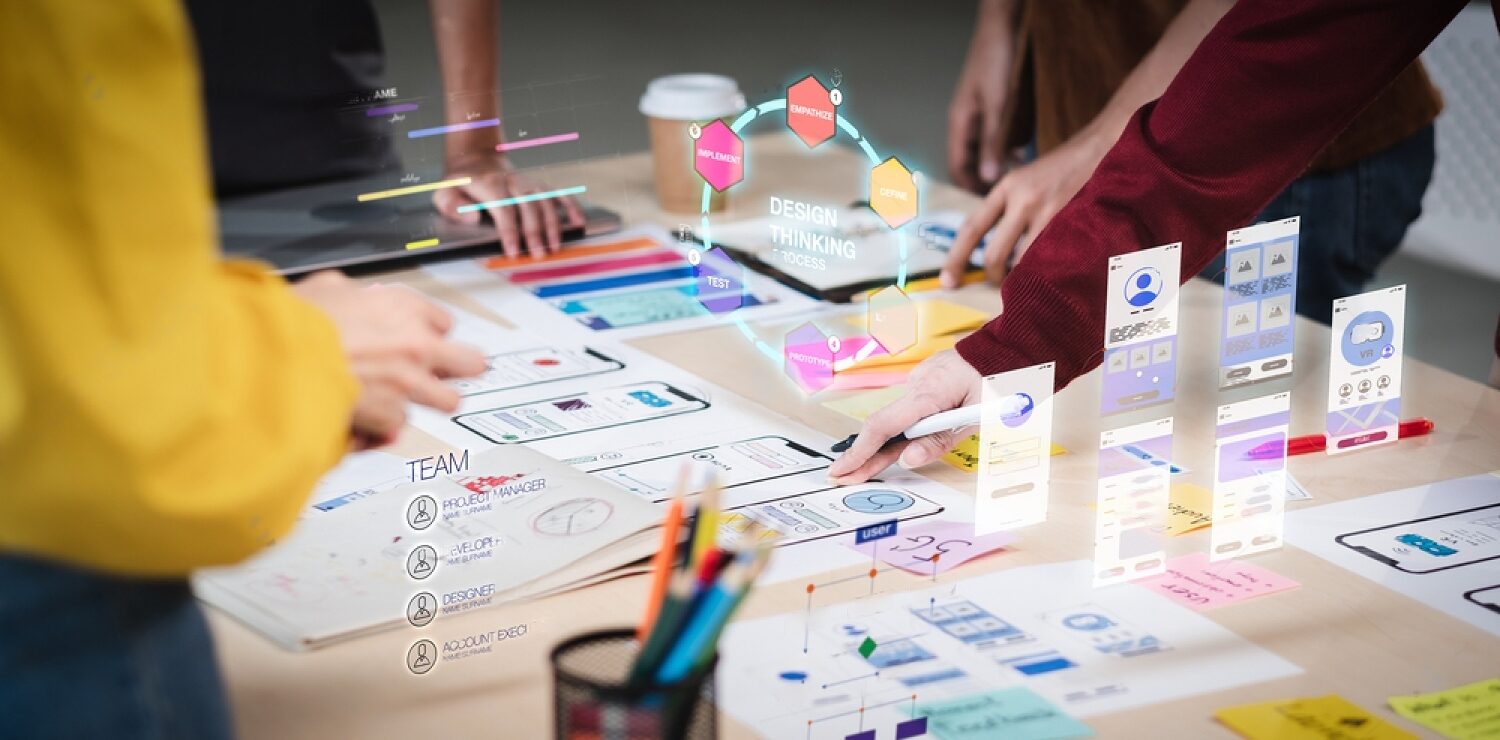
Bringing Continuous Product Design to Life in Manufacturing Companies
Continuous product design is a dynamic approach to product development that involves ongoing iterations and improvements throughout the entire lifecycle of a product. It focuses on gathering customer feedback, adapting to market trends, and incorporating new technologies to create products that meet evolving consumer needs. In this blog post, we will explore how manufacturing companies can bring continuous product design to life, the challenges they may face, and the opportunities it presents.
What Is Continuous Product Design?
Continuous Product Design (CPD) is an approach to product development that emphasizes iterative, customer-driven improvements during product life cycles (from conception through retirement).
Learning from user feedback, slowly improving products over time and remaining responsive and relevant for user needs are the cornerstones of innovation.
Key principles of CPD include using an agile and iterative approach to product development, customer-centric design, shorter releases, flexible prioritization strategies and waste reduction while adapting quickly to changing market conditions (Agile Iterative Development [AID]).
CPD can be especially relevant in digital product development, where it enables companies to extend agile product development principles across their business and allow teams to learn faster while agreeing upon priorities, ultimately producing products customers actually desire.
CPD allows businesses to leverage customer signals at every phase of digital product lifecycle to make informed decisions and optimize product performance based on real-time insights and analytics, thus making decisions with more precision and optimizing product performance with real data and intelligence.
Implementing CPD requires companies to foster an atmosphere of innovation and agility, establish cross-functional product teams with input from various functional areas within an organization, provide feedback channels with customers and stakeholders and leverage technology tools for streamlining design processes.
Successful companies that have adopted CPD include Apple, which uses an iterative development approach in designing its iPhone design; and Quantum Metric which has identified eight practices to attain CPD such as proactive detection of behavioral and system anomalies with real-time notifications and dashboards, shared quantified views of customer signals and business impacts and more, in real time.
The Importance of Continuous Product Design
Continuous product design offers several benefits for manufacturing companies. By embracing this approach, companies can stay ahead of the competition and ensure that their products remain relevant in a rapidly changing market. Here are some key reasons why continuous product design is important:
1. Meeting Customer Expectations
Customers today have higher expectations than ever before. They demand products that are not only functional but also aesthetically pleasing, user-friendly, and environmentally sustainable. Continuous product design allows manufacturing companies to gather feedback from customers and incorporate their preferences and suggestions into the design process. By doing so, they can create products that truly meet customer expectations.
2. Adapting to Market Trends
Market trends and consumer preferences can change rapidly. Continuous product design enables manufacturing companies to stay in tune with these trends and adapt their products accordingly. By regularly analyzing market data and consumer feedback, companies can identify emerging trends and incorporate them into their product designs. This ensures that their products remain competitive and appealing to customers.
3. Embracing Technological Advancements
Technology is constantly evolving, and new innovations can significantly impact product design. Continuous product design allows manufacturing companies to stay updated with the latest technological advancements and integrate them into their products. By leveraging new technologies, companies can enhance the functionality, performance, and user experience of their products, giving them a competitive edge in the market.
Example of Product Design Integration and Successful Manufacturing
Here are some examples: These are a few examples.
Smart Home Devices
The product and manufacturing engineers worked together to create smart home products, including cameras, speakers, thermostats and other devices. The devices must be both functional and attractive, and also compatible and reliable. Manufacturing engineers are responsible for ensuring that devices can be manufactured efficiently and at a low cost. The two work closely together in order to choose the most appropriate materials, processes and components as well as optimize the design to be manufactured and assembled.
Medical Devices
Medical devices such as surgical instruments, implants and prosthetics have been developed by product and manufacturing engineers. The devices must meet high safety and performance standards, comply with regulations, be adaptable and customizable, and adhere to compliance. Manufacturing engineers are responsible for ensuring that devices can be manufactured with precision and high quality. Product engineers work to create solutions that fit the preferences and needs of clinicians and patients. Together, they choose materials, technologies and methods that are suitable for the device, validate its design and ensure biocompatibility.
Consumer Electronics: Design for Manufacturing
Apple Inc. has been a successful example of Design for Manufacturing implementation (DFM). DFM is a design-based approach that aims to reduce manufacturing costs and difficulties by incorporating manufacturing capabilities and processes into the product’s development phase. DFM reduces the likelihood of errors in manufacturing, improves lead times and increases overall product efficiency by optimizing the design.
Design and Manufacturing Teams Working Together
Duro Labs is an excellent example of how design engineers and manufacturers can work together to overcome the gap between them. They have brought products to the market quicker by enhancing collaboration between designers and manufacturers. The collaboration allows for early identification of potential problems, saving time and money.
Design for Manufacturability in Product Development
Design for Manufacturability is a method that allows manufacturers to identify and resolve problems early on in the design process, saving them money and time. It also ensures that their products will be produced within budget and deadline. Designers can communicate regularly with manufacturers to help identify problems. 5 These examples show the value of collaboration among product engineers and manufacturers, and the advantages of taking into account manufacturing capabilities and processes during the design stage. Working together allows companies to create products that are innovative and meet the needs of customers while also ensuring cost-effective, efficient production.
Challenges of Continuous Product Design
While continuous product design offers numerous benefits, it also presents certain challenges that manufacturing companies need to overcome. Here are some common challenges:
1. Balancing Speed and Quality
Continuous product design involves frequent iterations and updates. While it is important to move quickly to stay ahead of the competition, it is equally crucial to maintain quality standards. Manufacturing companies need to strike a balance between speed and quality to ensure that their products are both innovative and reliable.
2. Effective Supply Chain Management
Continuous product design requires a well-managed and efficient supply chain. Manufacturing companies need to collaborate closely with their suppliers to ensure timely delivery of high-quality components and materials. Effective supply chain management is essential to maintain a smooth flow of production and meet customer demands.
3. Quality Control
With frequent design iterations, maintaining consistent quality can be a challenge. Manufacturing companies need robust quality control processes in place to ensure that each iteration meets the desired standards. This involves rigorous testing and inspection at every stage of the product development cycle.
Opportunities of Continuous Product Design
Despite the challenges, continuous product design presents several opportunities for manufacturing companies. Here are some of the key opportunities:
1. Enhanced Customer Satisfaction
Continuous product design allows manufacturing companies to create products that align closely with customer needs and preferences. By incorporating customer feedback and adapting to market trends, companies can enhance customer satisfaction and build a loyal customer base.
2. Increased Innovation
Continuous product design encourages a culture of innovation within manufacturing companies. By embracing ongoing iterations and improvements, companies can foster a creative environment that promotes new ideas and solutions. This can lead to the development of groundbreaking products that set them apart from competitors.
3. Stronger Relationships with Manufacturing Partners
Manufacturing companies rely on strong partnerships with their manufacturing partners to bring their product ideas to life. Continuous product design requires close collaboration and communication between the two parties. By working together, companies can leverage the expertise and capabilities of their manufacturing partners to optimize the design and manufacturing processes.
Conclusion
The continuous product design approach is an effective way for manufacturing companies to develop innovative products that are centered around the customer. This approach allows companies to stay on top of their competition, adapt to changing market conditions, and meet customers’ expectations. It is not without its challenges. These include balancing quality and speed, and ensuring effective supply chain management and quality control. However, it also offers many benefits, including increased customer satisfaction, improved innovation and strengthened relationships with manufacturers.
MOOFSOURCING can help. Our 100% satisfaction rate is something we are proud of. We are proud of our satisfied clients, which is a result of our commitment to effective supply chain management and quality control. Our team will help you at every stage of product development, including design and prototyping. Call us now and discover how we can be the ideal manufacturing partner for your business.



